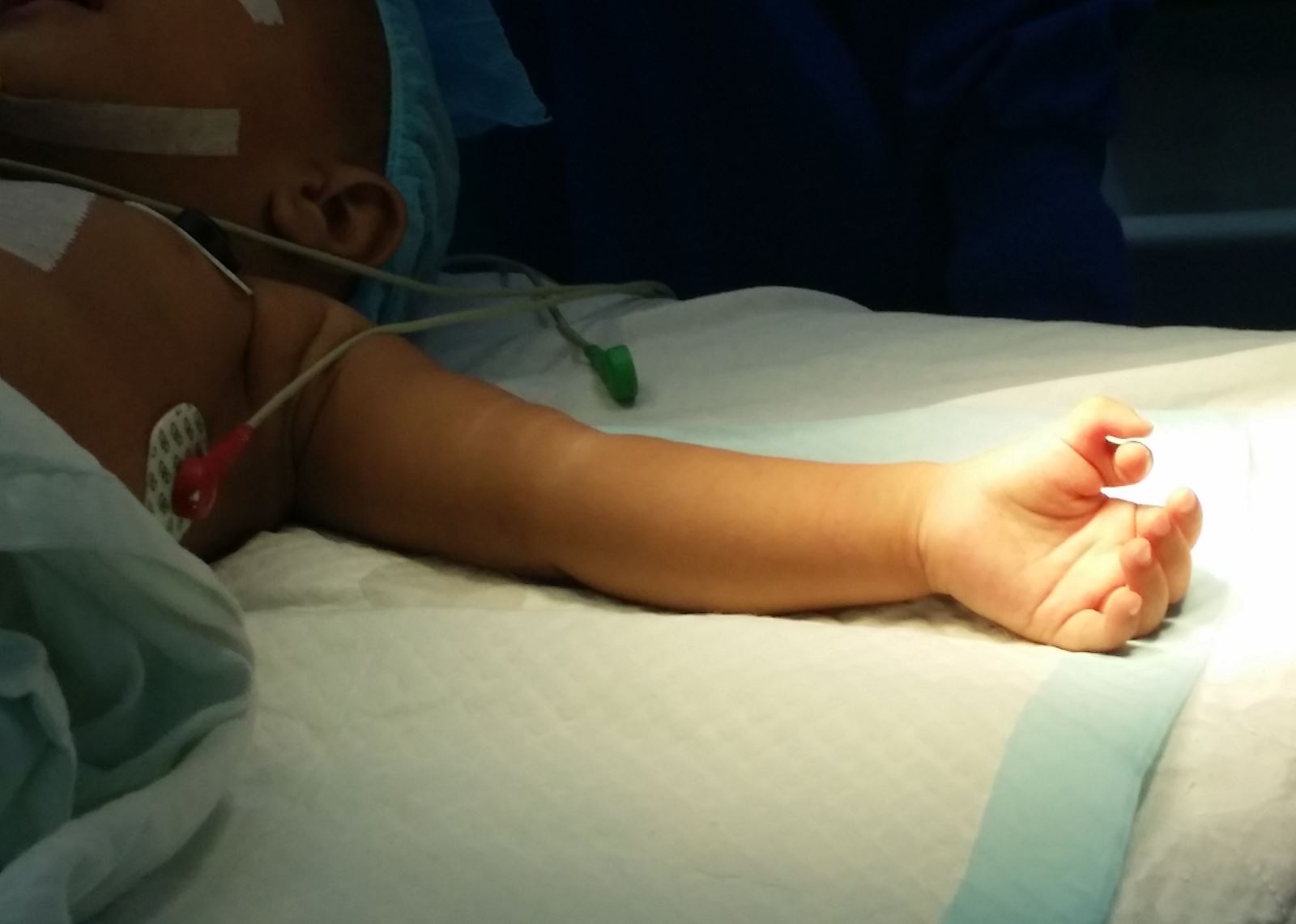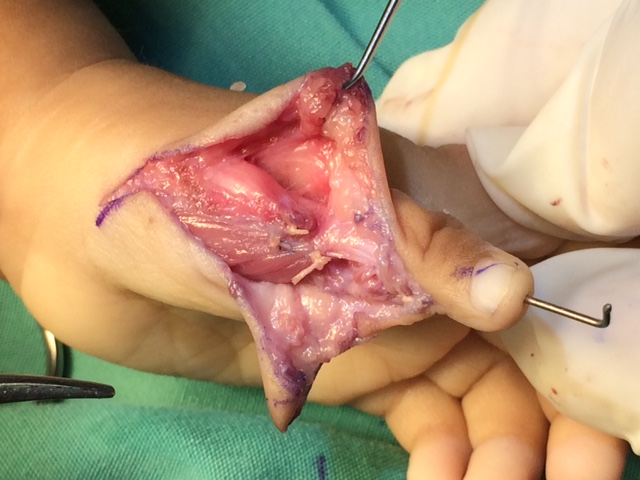CASE EXAMPLE: TRIPHALENGEAL THUMB, TYPE VII
Kamil is only 1 year old. Kamil’s pre-operative photos and X-Rays.
.jpg)
Kamil’s surgery was complicated because she required a lot of reconstruction to realign the more dominant digit.
Loupe magnification was necessary for such a small hand.
Kamil’s X-ray looks as though she is the more common type IV deformity where the duplication occurs at the proximal phalanx.
However, during surgery the pediatric surgeon saw a middle phalanx that was all cartilage. The middle phalanx was invisible on X-Ray.
Therefore Kamil has 3 phalanges instead of 2, type VII, which is very rare.
Time to Play the Brain Game:
Q) What percent of polydactyly cases are hereditary in nature?
A) 15% are hereditary

Kamil’s surgery consisted of:
- Excision of the extra thumb, reserving the necessary structures for the dominant thumb
- Correctional osteotomy to reshape the metacarpal head, very difficult due to the abnormally shaped metacarpal head that is common with type VII deformities
- Transfer of EPL from extra thumb to dominant thumb
- Reattachment of APB tendon
- Rotation of the proximal phalanx in more pronation for better opposition
- Reconstruction of supportive MCP joint ligaments
- K-wire fixation to secure position
.jpg)
After surgery:
Kamil was fitted with long arm cast to wear for 6 weeks.
The surgeon was able to show Kamil’s mother the pictures from the operating room.
Kamil’s mother was very happy to see what her daughter’s hand looked like under the cast.
After cast removal:
A custom thumb spica splint was fabricated for Kamil to wear for another 4 weeks
Then she was to wear the removable thumb spica splint to bed until 6 months post-op




